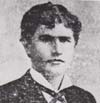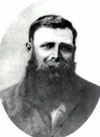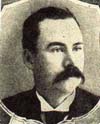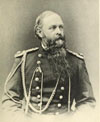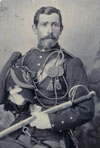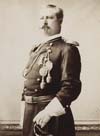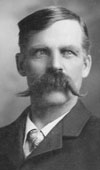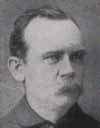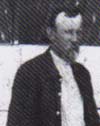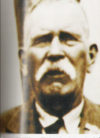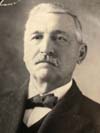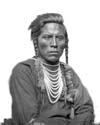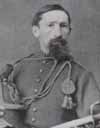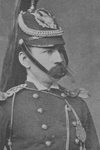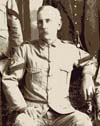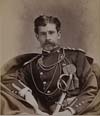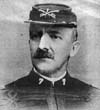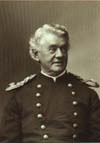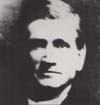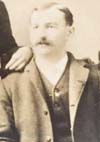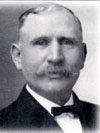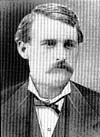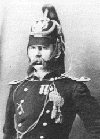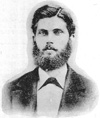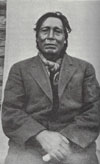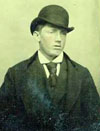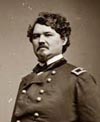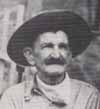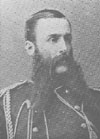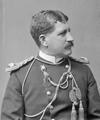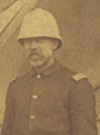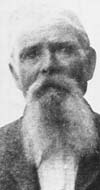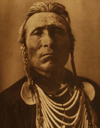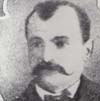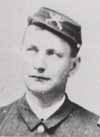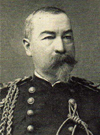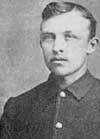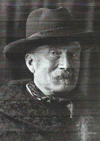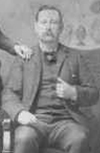Michael Keegan died on July 10, 1900, in Chicago, Illinois. He was originally buried in an unmarked grave in the Calvary Cemetery in Evanston, Illinois, and was reinterred in the Fort Sheridan Cemetery in Highwood, Illinois, on November 11, 1999. He was a Private in Company L who was not present at the Battle at the Little Bighorn due to detached service at Powder River where he was guarding the company’s property.
Levi Madison Thornberry and Linnie Morris were married on July 11, 1899, in Manetta, Ohio, and they had a son, Levi Gordon Thornberry who was born in 1900. The elder Thornberry was a Private in Company M who participated in the valley and hilltop fights during the battle.
William Heyn (left) was born on July 12, 1848, in Bremen, Germany. He was a First Sergeant in Company A who participated in the valley and hilltop fights and was wounded.
John H. Meier (right) died on July 12, 1917, in Washougal, Clark County, Washington, and was buried in the Washougal Memorial Cemetery there. He was a Private in Company M who participated in the valley and hilltop fights and was wounded.
Thomas Joseph Callan (left) was born in County Louth, Ireland, on July 13, 1853. He was a Private in Company B who was with the pack train and in the hilltop fight. He was awarded the Medal of Honor on October 24, 1898, for his actions at the Little Bighorn.
James Wilber Darcy died at Barnes Hospital in Washington, D.C., on July 13, 1920. He was buried three days later in the Soldiers’ Home National Cemetery under the name James Wilber. He was a Private in Company M who participated in the valley and hilltop fights and was wounded in the left leg on June 26, 1876. See also https://lbha.org/?p=1724.
Edward Hall died in Albany, New York, on July 14, 1914, and was buried the next day in the Lake View Cemetery in Orwell, Vermont. He was a Private in Company G who was not present at the battle due to detached service in the company garden at Fort Abraham Lincoln.
Thomas W. Stivers was born on July 15, 1850, in Madison County, Kentucky. He was a Private in Company D who participated in the hilltop fight and was one of the water carriers who was awarded the Medal of Honor.
Henry Drago died on July 16, 1892, in Toledo, Ohio, and was buried in Mount Carmel Cemetery (also known as St. Mary’s Cemetery) there. He was a Sergeant in Company F who was not present at the battle due to detached service at Fort Abraham Lincoln where he was in charge of the company property and garden.
